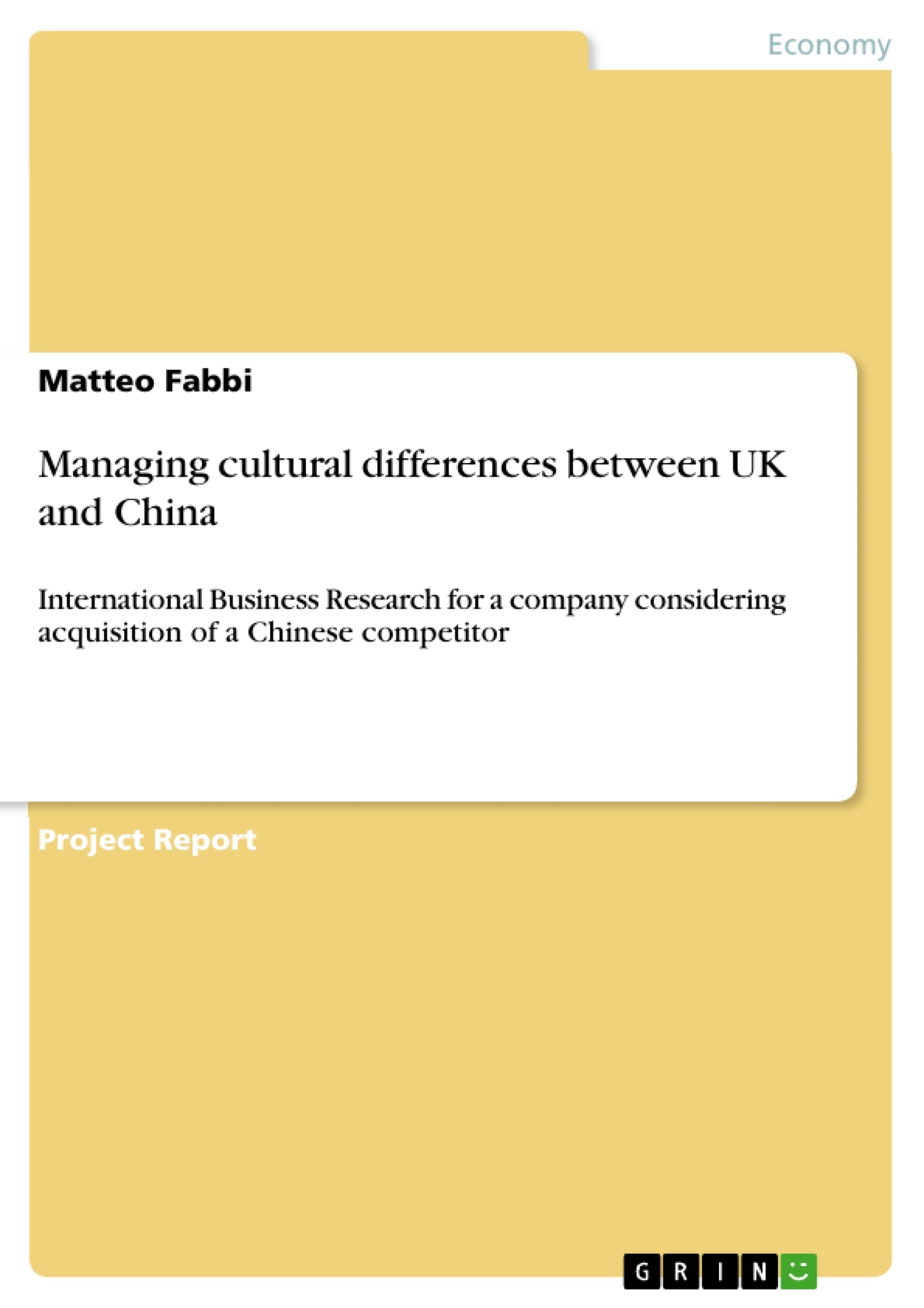The report aims to achieve three main objectives: the first is to determine the cultural differences between China and UK based on the fundamental theories of culture; the second is to analyze the issues related to functional areas such as Marketing and Human resources with theories of cross-cultural management and the third is to provide solutions and recommendations to managers involved in similar situations.
The scenario provided by the task has been identified by this report as the case of a cross-border M&A companies between UK and China, where the UK Company will be the parental group and China, the target. Cross-border M&A is defined as a project in which a firm from one country buys the entire asset or controls percentage of an enterprise in another country (Zhang & Wang, 2004).
When the cross-border M&A happens, it becomes the main task for the enterprise to combine resources and operations. Main goal of this report is to provide insights for managing cultural differences in order to reduce the costs of a lousy cross-cultural management and eliminate the conflicts caused from cultural differences in multinational enterprise.
Inhaltsverzeichnis (Table of Contents)
- Introduction
- Meaning of cultural integration
- Cultural differences
- Core Cultural Theories and implications for managers
- Edward T Hall concepts and Hofstede's dimension of culture theories
- Implication for managers
- Uncertainty avoidance and power of distance in Hofstede's theories
- Implication for managers
- Masculinity in the UK and China and implication for managers
- The challenge of language
- Implications for managers
- The challenge of Guanxi
- Solutions to resolve cultural differences between UK and China
- The Cultural Innovation by Integration
- Limitations of the applied theories
Zielsetzung und Themenschwerpunkte (Objectives and Key Themes)
This report examines the cultural differences between China and the UK, focusing on the challenges and opportunities presented by a cross-border M&A between a UK engineering company and a Chinese competitor. The report aims to provide insights for managing these cultural differences to minimize potential conflicts and maximize the success of the integration. Key themes addressed in this paper include:- Cultural integration in cross-border M&A
- Key cultural differences between China and the UK
- Theories of cultural differences (Hall, Hofstede)
- Implications for managers in cross-cultural situations
- Solutions for managing cultural differences
Zusammenfassung der Kapitel (Chapter Summaries)
- Introduction: This chapter introduces the report's objectives, which include analyzing cultural differences between China and the UK, examining cross-cultural management issues, and providing solutions for managers involved in similar situations. The chapter defines cross-border M&A and highlights the importance of managing cultural differences for successful integration.
- Meaning of cultural integration: This chapter discusses the concept of cultural integration in the context of cross-border M&A. It emphasizes the importance of coordinating cultural differences to promote understanding and communication between different groups within a merged company. The chapter also highlights the need to integrate individual company heritage and core values.
- Cultural differences: This chapter identifies key cultural differences between China and the UK, building on existing definitions of culture. It emphasizes the importance of understanding and respecting the values of the target group during an acquisition.
- Core Cultural Theories and implications for managers: This chapter examines two prominent theories of cultural differences – Hall's high/low context cultures and Hofstede's five cultural dimensions. It highlights the differences in communication styles, values, and attitudes towards risk and power distance between China and the UK. It also discusses implications for managers in areas like marketing and human resources.
- The challenge of language: This chapter focuses on the challenges of language barriers in cross-cultural communication and provides insights for managers on how to overcome these obstacles.
- The challenge of Guanxi: This chapter examines the unique concept of Guanxi in Chinese culture and its implications for business relationships.
- Solutions to resolve cultural differences between UK and China: This chapter explores practical solutions for managing cultural differences in cross-border M&A. It emphasizes the importance of cultural innovation and integration to create a new, shared company culture.
Schlüsselwörter (Keywords)
The key concepts explored in this report include cross-border M&A, cultural integration, Hofstede's cultural dimensions, high/low context cultures, language barriers, Guanxi, and cultural innovation. The report investigates the application of these concepts in the context of managing cultural differences between China and the UK, providing practical insights for managers involved in similar situations.- Quote paper
- Matteo Fabbi (Author), 2011, Managing cultural differences between UK and China, Munich, GRIN Verlag, https://www.grin.com/document/180512



